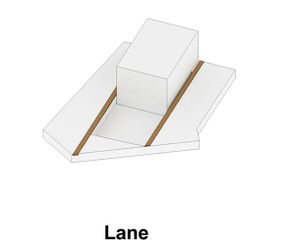Imam Reza Complex
ARCHITECTS
Kalout Architect Studio
ARCHITECTS IN CHARGE
Saeed reza Boreiri, Samaneh Ghasempour
PROJECT TEAM
Nasim Alavi, Shima Mavedati, Navaz Foladzari, Masoud Roknipour, Anahita Basiri, Atefeh Ahoie, Ghazal Refalian, Reza Valajam, Bijan Vaziri, Mohammad Karimi, Farnosh Esmaili
ART WORK TEAM
Peiman Banishorka, Hossein Tonekaboni, Mohsen Daienabi, Reza Gharebaghi, Farid Bakhtiari
STRUCTURE DESIGN
Behrang Baniadam
MECHANICAL DESIGN
Jafar Asadi
ELECTRICAL DESIGN
Mohammad reza Hosseini
MANAGER SUPERVISION
Reza jalali
SUPERVISOR
Reza Karimi
ADVISER
Mehdi Hojat
SUPERVISION TEAM
Reza jafari, Maryam Johari, Vadod Asadollahvash, Karim Tabari, Bahram Alvand, Shervin Atrsaiy, Milad Asgarian
ART CONSULTANT
Bita shekari
PHOTOGRAPHS
Parham Taghioff
YEAR
2012
LOCATION
Tehran, Tehran, Imam Hossein Square, Iran
CATEGORY
Religious Architecture, Cultural Architecture
Text description provided by architect.
The location of the Emam Reza religious and cultural complex in the cultural zone of Tehran (the capital of Iran) oriented the project towards creating an urban space for social interaction and participation of different generations and social groups.
The main idea of correlation and interrelationship between different social groups and encouraging the presence of the new generation in the complex, is reflected in the final form of the Shabestan which was shaped by the idea of interlocking hands as a symbol of unity and social cohesion.
Following this main form, the side wings of the building with the supplementary functions rise from and rest on the ground to create an innovative form visually.
The main form of the Shabestan, with the grandeur of a religious space, provides the opportunity of a unique experience to fulfill the immemorial ambition to connect with the Creator and feel the symbolic form of the dome.
This immediate and elucidate connection is also formed by a sunken courtyard as one of the characteristics of Persian architecture, which allows the users to get away from the exterior crowd and perceive the building in a tranquil space.
Also, the presence of water increases the transparency of the design. This space not only makes the separation from the everyday life possible but also participates in the process of meaning transference.
The complex consists of various functional zones such as a mosque, an art gallery, a bookstore coffee shop, an amphitheater, and an IT center, all of them designed in a unified form.
Besides, the usersí presence and the possible movement in different spaces are enhanced by lateral corridors alongside the Shabestan, in order to extend the surrounding urban spaces into the project and bring life to it.
Bricks used in the walls of the corridors and Shabestan together with glass, express the symbolic ascending movement from earth to light.
In construction of the project, there are some references to social identity of the users to evoke their memories from the Islamic and Persian architectural history.
Another symbol, the statue of cedar, which in Persian culture represents constancy, life, and freedom, is used in the project as a land mark.
The handmade glass covering the main dome is engraved with the names of God and starts from a face to face connection with the prayers and culminates to sky along the dome.

























